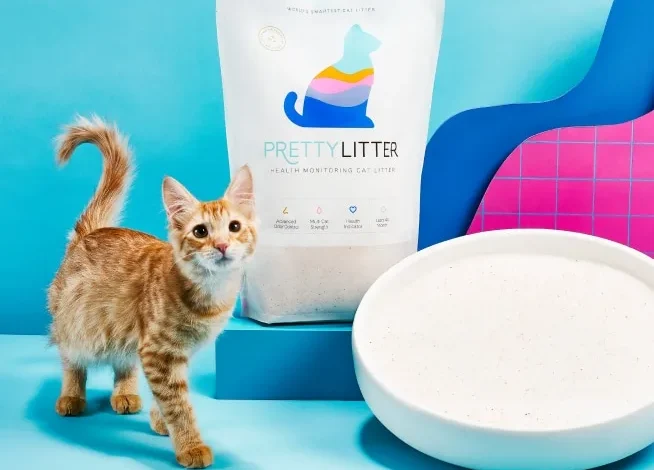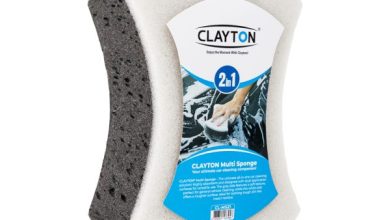Eco-Friendly & Effective: How Dust-Free Health Monitoring Litter Transforms Cat Care

Cat litter has come a long way from traditional clay formulas, now offering pet owners advanced health-monitoring features and eco-friendly materials. Dust-Free Health-Monitoring Wood and Cotton Cat Litter, made from sustainable materials like wood and cotton, provides an innovative solution for cat care that supports both feline health and environmental consciousness. Let’s explore how this type of litter can revolutionize your approach to cat care.
1. The Problem with Traditional Cat Litter
Most cat owners are familiar with clay litter, which, while widely available and affordable, comes with its downsides. Clay-based litters can create a dusty environment, causing respiratory issues in both cats and humans. Not only that, but traditional clay litter contributes to environmental harm due to strip mining, a process that depletes natural resources and contributes to pollution.
Dust-free wood and cotton litter, by contrast, offers a more sustainable and health-friendly option. It’s a biodegradable alternative that also helps reduce respiratory problems for your cat, making it a valuable choice for both pet and planet.
2. Why Dust-Free Matters for Your Cat’s Health
Dust from conventional litter can irritate your cat’s lungs, especially during the digging and burying process. Long-term exposure to dust can lead to respiratory problems, allergies, and other health concerns. Dust-free litter, made from wood and cotton fibers, significantly reduces this risk, keeping the air in your home cleaner and ensuring a healthier environment for your cat.
3. How Health Monitoring Litter Works
Health-monitoring litter is designed to react to changes in your cat’s urine, specifically the pH level, which can indicate underlying health issues. If your cat’s urine falls outside the normal pH range, it may signal potential health problems such as urinary tract infections, kidney disease, or other metabolic conditions.
These litters often use color-changing technology to alert you if your cat’s pH levels are abnormal. This early detection feature can be a game-changer in spotting health concerns before they worsen, allowing you to seek prompt veterinary care when needed.
4. Eco-Friendly Benefits of Wood and Cotton Litter
Choosing a dust-free litter made from wood and cotton means opting for a sustainable, biodegradable product. Unlike clay, which does not decompose easily and sits in landfills for years, wood and cotton break down naturally, reducing environmental impact.
Additionally, many brands use wood from recycled lumber and cotton from textile byproducts, repurposing materials that would otherwise go to waste. This contributes to a circular economy, minimizing waste and resource depletion.
5. Odor Control Without Harmful Chemicals
One of the biggest challenges of cat litter is odor control, and many traditional litters achieve this with synthetic fragrances and chemicals. Wood and cotton litter naturally suppress odors without needing additives, thanks to wood’s natural odor-absorbing properties and cotton’s high absorbency. This not only keeps the litter box area smelling fresh but also eliminates the risk of exposing your cat to potentially harmful chemicals.
6. Low-Tracking Litter for a Cleaner Home
Dust-free wood and cotton litters are often low-tracking, meaning they’re less likely to stick to your cat’s paws and spread around the house. Clay-based litters can cling to fur and end up scattered across floors, furniture, and other surfaces, adding to your cleaning workload. With low-tracking litter, you can maintain a cleaner home and spend less time sweeping up litter trails.
7. Comfortable for Cats’ Sensitive Paws
Wood and cotton-based litters are generally softer than clay, providing a more comfortable experience for cats, especially older or sensitive cats who may find hard clay uncomfortable to walk on. The soft, natural feel of wood and cotton fibers is more appealing to cats, encouraging consistent litter box use.
8. The Importance of pH Monitoring for Cat Health
Cats are prone to urinary tract issues, which can often go unnoticed until they become serious. Health-monitoring litter can help detect pH imbalances early, as high pH levels in urine might indicate a urinary tract infection, while low pH levels may signal other metabolic conditions.
Here’s a quick guide on what color changes in health-monitoring litter might indicate:
- Normal pH (No color change): Your cat is likely in good health.
- High pH (Color change): This may indicate the presence of a urinary tract infection or bladder stones.
- Low pH (Color change): This can point to conditions such as kidney issues or metabolic concerns.
By keeping an eye on the litter box, you gain valuable insights into your cat’s health, allowing you to act quickly if any concerning changes occur.
9. Choosing the Right Dust-Free Health-Monitoring Litter
Not all health-monitoring litter is created equal, so here are some factors to consider:
- Reliability of Health-Monitoring Feature: Make sure the litter’s pH detection is consistent and provides clear, easy-to-see color changes.
- Clumping Ability: A litter that clumps well will make scooping easier, which helps keep the box clean and ensures that urine stays in one place for accurate monitoring.
- Natural Odor Control: Look for wood and cotton litter with natural odor control properties, without any synthetic fragrances.
- Cat Comfort: Choose a litter with soft, rounded granules to ensure comfort for your cat.
10. Making the Transition to Dust-Free Health-Monitoring Litter
Cats can be picky about changes in their environment, so here are some tips to make the transition easier:
- Mix with Old Litter: Start by mixing the new litter with your existing brand. Gradually increase the amount of dust-free, health-monitoring litter over several days.
- Observe Your Cat: Watch how your cat reacts. Most cats adjust quickly, but if yours seems hesitant, continue the gradual transition.
- Keep It Clean: Cats are more likely to use a clean box. Scoop daily, as wood and cotton litter, while effective, may need regular maintenance to stay fresh.
Conclusion
Switching to dust-free, health-monitoring wood and cotton litter offers a multitude of benefits, from promoting respiratory health to supporting the environment. This type of litter combines sustainable, biodegradable materials with an innovative approach to monitoring your cat’s health.
By choosing a product that keeps your home cleaner, supports the well-being of your cat, and minimizes environmental impact, you’re taking a proactive step towards more conscientious cat care.



